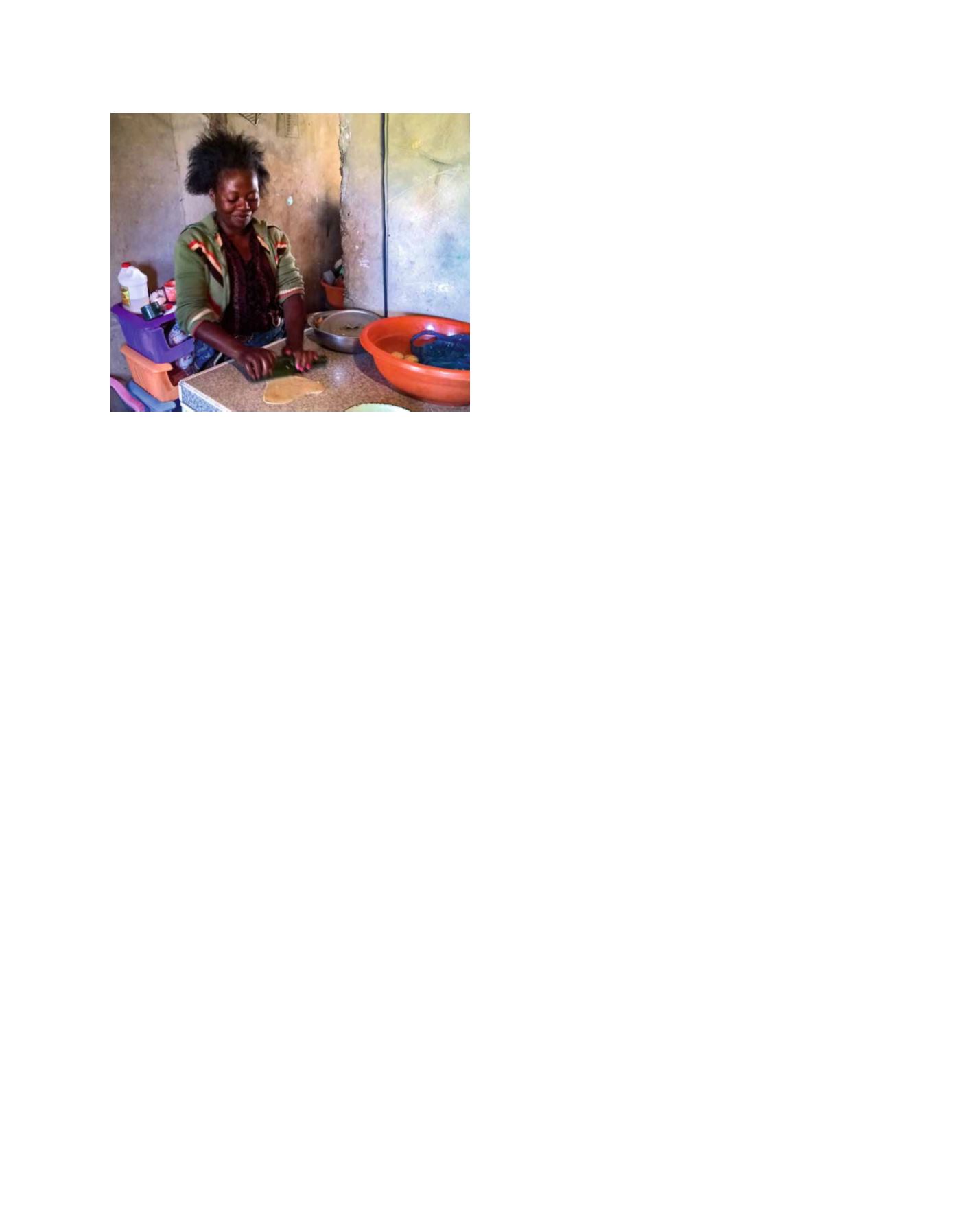

[
] 26
ity is a way forward to implementing desired macroeconomic
policies. Poverty reduction is not possible without addressing
gender equality questions.
One example of our support to women’s economic empow-
erment is Women’s World Banking (WWB). According to
recent studies by WWB, financial institutions often do not
know their potential customers, and financial services meant
for women often fail because they are not designed for women’s
needs. WWB works with financial institutions to increase low-
income women’s access to financial tools and resources and
to invest in women as customers and leaders. WWB assists
financial institutions with in-depth market research, finan-
cial product development and consumer education. For the
institutions, this is a great way to increase their customer base
by serving those that were previously left unserved by their
regular financial products.
For instance in Jordan, WWB’s network member has devel-
oped the country’s first private health microinsurance, which
provides benefits after hospitalization that clients can use for
transportation to hospital or to cover lost business revenue.
The product is widely used by women to cover maternity-
related hospitalization costs. It has 105,000 active policies and
has been expanded to Peru, Uganda, Morocco and Egypt.
Another example is savings schemes. Women whose earn-
ings are low and unpredictable are able to save on average
10-15 per cent of their income, but they often lack reli-
able savings schemes. For financial institutions, savings
schemes are easier to manage than credit as they do not rely
on in-depth understanding of the market dynamics. They
also provide opportunities to market other financial prod-
ucts to savings clients. WWB network members in Pakistan,
Colombia, Kenya, the Dominican Republic, Nigeria, Malawi
and Tanzania are offering savings schemes that operate in the
markets where traders, most of them women, work, giving
them convenience and security.
The savings schemes currently have 1 million active
accounts. Notably, financial products designed for women
often end up enhancing the financial inclusion of men, and
thus reducing inequality overall. Approximately 1.6 million
clients currently benefit from the financial products of WWB
network members, including credit, small to medium enter-
prise services and mobile financial services.
Another encouraging example of women’s economic empow-
erment and ‘leaving no one behind’ is the Social Cash Transfer
(SCT) programme in Zambia. Despite Zambia being considered
as a low-middle income country, 60 per cent of its population
lives in poverty and 42 per cent in extreme poverty.
SCT started as a one-district pilot and has grown into a
nationwide programme with significant government financing.
In 2016, it was scaled to 78 districts, covering approximately 8
per cent of the population. SCT’s success is due to years spent
designing a targeting system that best reaches the poorest
Zambians, consistent impact assessment during the implemen-
tation, and evidence-based advocacy for government financing.
The basic idea of SCT is to provide reliable cash transfers to
poor families who are either destitute or incapacitated. Although
the benefit is designed to assist the entire family, women are
often the recipients. Widow or elderly headed households with
orphans, households with an elderly member or a member with
a severe disability are targeted. All beneficiary households are
assessed based on their welfare and incapacity status, and the
targeting is done in cooperation with the community and the
district welfare officer. The payments are handled by government
teachers or health workers, reducing the transaction costs.
The transfer amount is relatively small, ZMK 70 or just over
US$7 per month. SCT is an effective and inexpensive poverty
reduction programme which the Zambian Government will
gradually upscale and cover the costs of the transfers. Impact
evaluation has shown that SCT is more successful than tradi-
tional poverty reduction programmes such as material welfare
support and farmer input support programmes.
For every Kwacha transferred an additional 0.68 Kwacha
has been generated through productive impacts. This means
that SCT beneficiary households have invested in agricul-
ture production, livestock rearing or non-farm enterprises
and thus, the depth of poverty has reduced. Families have
increased food consumption with 95 per cent of households
eating more than one meal a day. Harmful consumption such
as tobacco or alcohol has not increased. There were significant
improvements in living conditions as more families acquired
mosquito nets, their own latrines, lighting and cement floors.
The overall welfare of children has improved, incidences of
diarrhoea have reduced, more children have their material
needs met (two sets of clothing, shoes and a blanket) and
more children aged 15-17 are in school. Beneficiary testimo-
nies have also consistently voiced that SCT has helped ensure
families’ dignity as they are no longer dependent on other
people and therefore have the confidence to participate in the
community and prepare for future shocks.
Women’s economic empowerment requires both comprehen-
sive and tailored approaches and interventions to succeed. The
big challenge that affects women’s participation in the economy
at large is gender discrimination and it is important that we
address the discriminatory social norms, attitudes and practices
as we provide other kinds of support. Considering the potential
women possess for the economy and the well-being of society,
we cannot afford to miss this opportunity to tap it.
Image: Timo Olkkonen
Supported by SCT, this woman, whose husband has a disability, has started a
baking business to earn income
A B
etter
W
orld
















